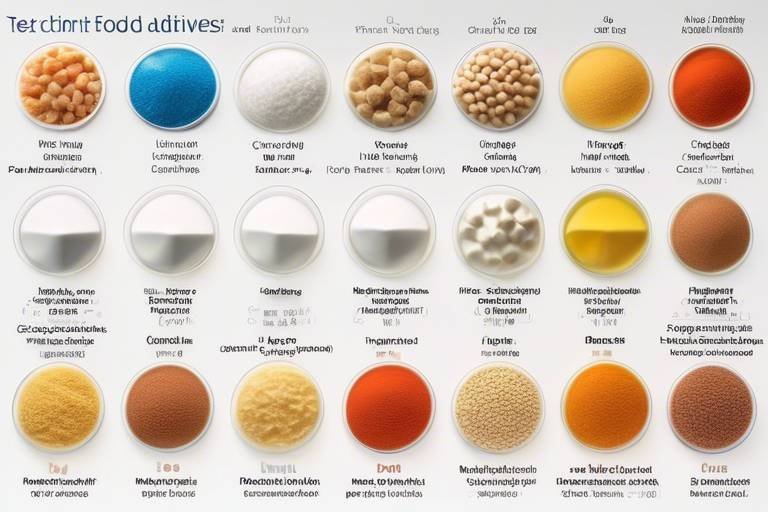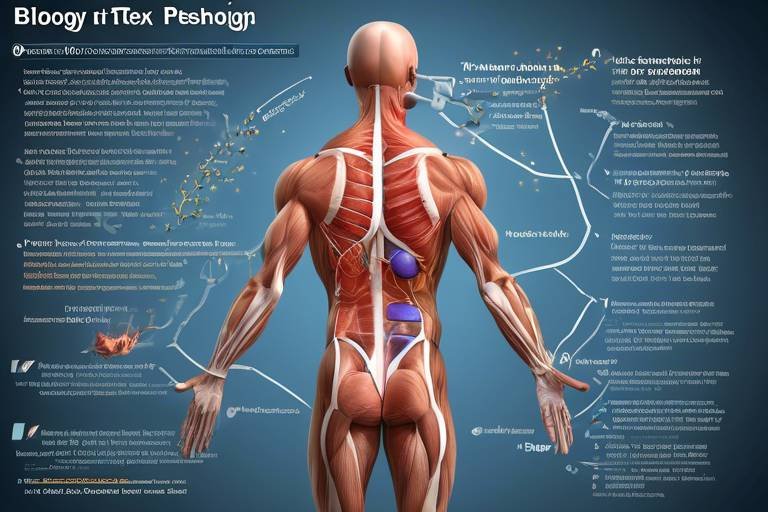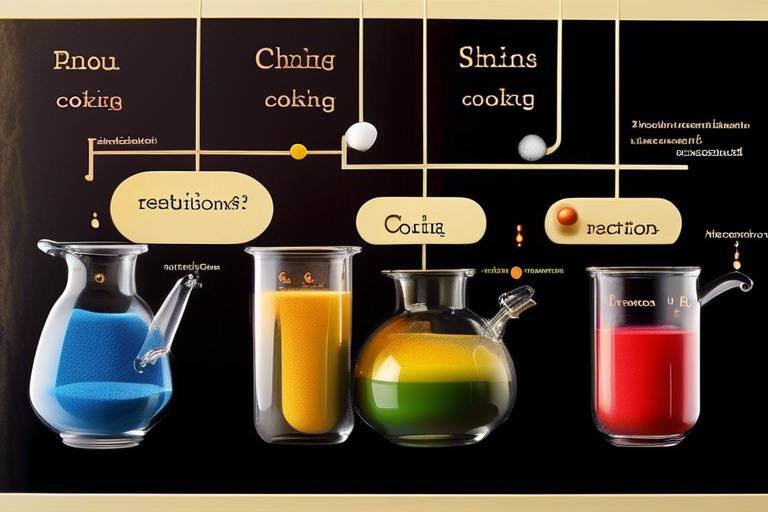How Daily Routines Affect Productivity - The Science
Have you ever wondered why some days you feel like a productivity powerhouse while other days you can barely muster the energy to get off the couch? The secret often lies in your daily routines. Routines, whether we realize it or not, shape our behaviors, influence our mental states, and ultimately dictate how productive we can be. In this article, we will dive into the science behind daily routines and explore practical strategies to enhance your efficiency and effectiveness in both personal and professional settings.
At the core of productivity lies the concept of consistency. By establishing a set routine, you create a framework that not only organizes your day but also helps your brain to operate on autopilot for certain tasks. This means less mental fatigue and more focus on the things that truly matter. Think of your daily routine as a well-oiled machine; each part must work in harmony for the whole to function optimally. When you have a routine, you can allocate your mental resources more efficiently, allowing you to tackle challenges with greater ease.
Moreover, the science of habits reveals that our brains are wired to respond positively to consistency. According to research in behavioral psychology, routines can help form habits that lead to better productivity. When you repeat a behavior in a consistent context, it becomes automatic. This is why creating a morning routine is often touted as a game-changer for productivity. It sets the tone for the day, influencing mental clarity and energy levels. Establishing a consistent morning practice can enhance your focus and productivity throughout the day, making you feel more accomplished and less stressed.
So, how can you leverage daily routines to boost your productivity? Here are a few strategies to consider:
- Identify Your Peak Hours: Everyone has certain times of the day when they are most alert and focused. Identify these peak hours and schedule your most important tasks during this window.
- Incorporate Breaks: Regular breaks are essential for maintaining productivity. Short breaks can rejuvenate the mind and prevent burnout, ultimately leading to better performance.
- Reflect and Adjust: Take time to reflect on your routines. What works? What doesn’t? Adjusting your daily practices can lead to significant improvements in productivity.
In conclusion, understanding how daily routines affect productivity can empower you to take control of your time and energy. By establishing effective routines, you can optimize your performance, reduce stress, and enhance your overall quality of life.
Q: What is the best way to start a morning routine?
A: Start small! Choose a few activities that you enjoy and can do consistently, such as stretching, reading, or having a healthy breakfast. Gradually build on this routine as it becomes a habit.
Q: How long should my breaks be?
A: Ideally, breaks should last about 5-10 minutes for every hour of focused work. This can help refresh your mind and maintain your productivity levels.
Q: Can evening routines really affect my productivity the next day?
A: Absolutely! A good evening routine can improve your sleep quality, which in turn enhances your energy levels and focus for the next day.
Q: What role does sleep play in productivity?
A: Sleep is crucial for cognitive function and overall health. Poor sleep can lead to decreased focus, memory issues, and reduced productivity, so it’s essential to prioritize quality rest.

The Importance of Morning Routines
Have you ever noticed how the way you start your morning can set the entire tone for your day? A well-structured morning routine can be the difference between a productive day and one filled with chaos and distraction. Morning routines are not just a series of tasks to check off; they are a powerful tool that can influence your mental clarity, energy levels, and overall productivity.
Establishing a consistent morning practice can enhance your focus and productivity throughout the day. Think of your morning routine as the foundation of a house; without a solid base, everything else can crumble. By incorporating specific activities into your morning, you can prime your mind and body for the challenges ahead. For instance, engaging in activities such as meditation, light exercise, or even a simple glass of water can kickstart your metabolism and sharpen your focus.
So, what exactly should you include in your morning routine? Here are a few key elements that can help:
- Hydration: Start your day with a glass of water to rehydrate your body after a night of sleep.
- Mindfulness: Spend a few minutes in meditation or journaling to clear your mind and set intentions for the day.
- Physical Activity: Engage in some form of exercise, whether it's yoga, a brisk walk, or a full workout, to boost your energy levels.
- Nutrition: Eat a healthy breakfast that fuels your body and brain, providing the necessary nutrients for optimal performance.
By incorporating these elements into your morning routine, you can create a sense of structure and predictability that enhances your mental state. Imagine waking up each day with a clear mind, ready to tackle your to-do list with enthusiasm. It’s like having a secret weapon in your productivity arsenal!
Moreover, it’s essential to remember that consistency is key. Just like any habit, the more you practice your morning routine, the more natural it will become. Over time, you’ll notice a significant improvement in your focus and productivity levels. You might even find that you’re able to accomplish more in less time, leaving you with extra hours to enjoy your life outside of work.
In conclusion, the importance of morning routines cannot be overstated. They are the cornerstone of a productive day, helping you to cultivate focus, energy, and a positive mindset. So, why not give it a try? Start small, pick a few elements that resonate with you, and gradually build a morning routine that sets you up for success. Your future self will thank you!

The Role of Breaks in Productivity
Have you ever found yourself staring blankly at your computer screen, desperately trying to push through a task but feeling your brain just won’t cooperate? You’re not alone! Research has shown that our brains aren’t built for marathon work sessions. Instead, they thrive on regular breaks. These pauses are not just a luxury; they are a necessity for maintaining high levels of productivity throughout the day.
When we take breaks, we give our minds a chance to reset. Imagine your brain as a smartphone; if you keep it running without charging, it will eventually slow down and become unresponsive. Similarly, our cognitive functions can become sluggish without proper rest. In fact, studies suggest that taking short breaks can enhance focus, improve memory retention, and boost overall performance. So, how can we effectively integrate breaks into our daily routines?
One of the most effective strategies is to schedule breaks at regular intervals. For instance, the Pomodoro Technique encourages working for 25 minutes followed by a 5-minute break. After four sessions, you take a longer break of 15-30 minutes. This method not only helps maintain concentration but also prevents burnout. But what types of breaks are most beneficial? Let’s explore that further.
Not all breaks are created equal! The effectiveness of a break can vary based on the activity you choose. Here’s a quick overview:
| Type of Break | Benefits |
|---|---|
| Physical Activity | Boosts energy and improves cognitive function |
| Mindfulness Practices | Reduces stress and enhances focus |
| Social Interaction | Improves mood and fosters creativity |
| Nature Breaks | Increases mental clarity and reduces fatigue |
As you can see, incorporating different types of breaks can significantly impact your productivity levels. It’s essential to experiment and find what works best for you.
Let’s dive deeper into physical activity breaks. Getting up and moving around for just a few minutes can work wonders for your brain. Whether it’s a quick walk, some stretches, or even a few jumping jacks, these activities can increase blood flow and oxygen to the brain, enhancing your cognitive abilities. Think of it as giving your brain a quick workout — it’s like hitting the refresh button on your computer!
On the other hand, mindfulness breaks can be equally powerful. Taking a few minutes to practice deep breathing, meditate, or simply relax can help clear your mind and reduce stress. Imagine standing under a waterfall; the cool water washes away all your worries and leaves you feeling rejuvenated. That’s the power of mindfulness! Techniques like guided meditation or even just focusing on your breath can help you return to your tasks with renewed energy and focus.
In conclusion, integrating breaks into your daily routine isn’t just about stepping away from your desk; it’s about recharging your mind and enhancing your overall productivity. By understanding the role of breaks and experimenting with different types, you can create a more effective work environment that fosters creativity and efficiency.
- How long should breaks be? A good rule of thumb is to take short breaks of 5-10 minutes every hour, with longer breaks of 15-30 minutes after every few hours of work.
- What activities are best during breaks? Engaging in physical activity, practicing mindfulness, or even socializing can be highly beneficial during breaks.
- Can breaks really improve productivity? Absolutely! Regular breaks can enhance focus, reduce stress, and prevent burnout, leading to higher productivity levels.

Types of Effective Breaks
When it comes to boosting productivity, the type of breaks you take can make all the difference. Think of breaks as a refreshing splash of water on a hot day; they can rejuvenate your mind and body, allowing you to return to your tasks with renewed vigor. But not all breaks are created equal! Some can recharge your batteries while others might leave you feeling more drained than before. So, let’s explore some effective break types that can truly elevate your productivity levels.
First off, we have physical activity breaks. These are not just about hitting the gym or going for a run; they can be as simple as stretching, taking a brisk walk, or even doing a few jumping jacks. Engaging in physical activity during your breaks can significantly enhance your energy levels and cognitive function. It’s like giving your brain a mini workout! Research shows that just a few minutes of movement can increase blood flow to the brain, improving concentration and focus. Imagine how much more you could accomplish if you returned to your work feeling invigorated!
Next, let’s talk about mindfulness and relaxation breaks. In today’s fast-paced world, stress can easily pile up, clouding your mind and making it hard to concentrate. Incorporating mindfulness practices such as deep breathing, meditation, or even just sitting quietly for a few moments can help clear your mind and reduce stress. Picture this: you’re feeling overwhelmed with tasks, and you take just five minutes to breathe deeply and center yourself. When you return to your work, you’re not just refreshed; you’re also more focused and ready to tackle challenges head-on. Mindfulness breaks are like a mini-vacation for your brain!
To give you a clearer picture, here’s a quick comparison of these two break types:
| Break Type | Benefits | Recommended Duration |
|---|---|---|
| Physical Activity Breaks | Boosts energy, enhances cognitive function | 5-10 minutes |
| Mindfulness Breaks | Reduces stress, improves focus | 5-10 minutes |
In addition to these, you might also want to consider social breaks. Interacting with colleagues or friends during your downtime can provide a mental reset and foster a sense of community, which is essential for morale. Just a quick chat or a laugh can lighten your mood and bring a fresh perspective to your work. It’s like taking a sip of cool lemonade on a hot summer day—it refreshes you and makes everything feel a bit brighter.
Ultimately, the key is to find the right mix of breaks that work for you. Experiment with different types and durations to see what helps you feel the most rejuvenated. Whether it’s a quick walk, a few moments of mindfulness, or a chat with a friend, integrating effective breaks into your daily routine can lead to significant improvements in both your productivity and overall well-being.

Physical Activity Breaks
When it comes to boosting productivity, can be a game changer. Imagine sitting at your desk for hours, your mind foggy and your body feeling stiff. Now, picture yourself taking a short break to stretch, walk, or even do a few jumping jacks. Instantly, you feel revitalized, your blood pumping, and your mind clearer. Studies have shown that incorporating short bursts of physical activity into your daily routine can significantly enhance your cognitive function and overall productivity.
Why does this happen? Well, when you engage in physical activity, your body releases endorphins, those feel-good hormones that can elevate your mood and reduce stress. This biochemical boost not only makes you feel better but also sharpens your focus. It's like giving your brain a refreshing splash of cold water. Just a few minutes of movement can lead to improved concentration, creativity, and problem-solving skills. But what types of physical activities are most effective during these breaks?
Here are some simple yet effective options you can consider for your physical activity breaks:
- Stretching: Simple stretches can relieve tension in your muscles and improve circulation.
- Walking: A brisk walk around your office or home can clear your mind and boost your energy.
- Quick Workouts: Short bursts of exercises, like push-ups or squats, can elevate your heart rate and invigorate your body.
- Dancing: Put on your favorite song and dance for a few minutes. It’s fun and a great way to lift your spirits!
Moreover, you don't have to stick to just one type of activity. Mixing it up can keep things interesting and cater to different energy levels throughout the day. For example, you might choose to stretch in the morning, take a walk after lunch, and do a quick workout before wrapping up your work. This variety not only keeps you engaged but also ensures that you're working different muscle groups and maintaining overall fitness.
Incorporating these breaks into your daily routine doesn't require a lot of time. Just 5 to 10 minutes every hour can make a significant difference. Consider setting a timer on your phone or using productivity apps that remind you to take these breaks. The key is to be consistent. Over time, you'll find that these physical activity breaks become a natural part of your workflow, contributing to a more productive and fulfilling day.
In summary, physical activity breaks are not just about moving your body; they are a powerful tool for enhancing your productivity. By taking time to engage in short bursts of exercise, you can improve your mental clarity, boost your mood, and ultimately achieve more throughout your day. So, why not give it a try? Your body and mind will thank you!
- How long should my physical activity breaks be? Aim for 5 to 10 minutes every hour to reap the benefits.
- What types of activities are best for these breaks? Stretching, walking, quick workouts, and even dancing can be effective.
- Can physical activity breaks really improve my productivity? Yes! They help clear your mind, boost energy, and enhance focus.

Mindfulness and Relaxation Breaks
In our fast-paced world, the concept of taking a break often gets overlooked. However, are not just a luxury; they're a necessity for maintaining productivity and mental well-being. Imagine your mind as a computer—it can only handle so many tasks before it starts to lag. Just like rebooting a computer can clear up its operations, taking mindful breaks can refresh your mental state, allowing you to return to your tasks with renewed focus and energy.
So, what exactly does a mindfulness break involve? It’s about stepping away from the hustle and bustle of your day, even if just for a few minutes, to center yourself. This can include practices like deep breathing, meditation, or simply taking a moment to appreciate your surroundings. The beauty of these breaks is that they can be tailored to fit into any busy schedule. You don’t need a yoga mat or a meditation cushion; all you need is a few quiet moments. Here are some effective techniques:
- Deep Breathing: Close your eyes and take a few deep breaths. Inhale deeply through your nose, hold for a moment, and exhale slowly through your mouth. This simple act can significantly lower stress levels.
- Guided Meditation: There are numerous apps available that offer quick guided meditations. Just 5-10 minutes can transport you to a calmer state.
- Nature Breaks: If possible, step outside. Nature has a unique ability to calm the mind. Even a few minutes of fresh air can work wonders.
Research shows that incorporating mindfulness into your breaks can lead to increased productivity and creativity. In fact, a study published in the journal Psychological Science found that individuals who practiced mindfulness showed greater cognitive flexibility and improved problem-solving skills. This means that not only do you feel better, but you also perform better!
To make the most of your mindfulness breaks, consider setting a timer. This ensures that you’re giving yourself permission to step away without the guilt of unfinished tasks looming over you. You can start with just 5 minutes and gradually increase the time as you become more comfortable with the practice. The key is to be consistent. Just like any other habit, regularity is crucial for reaping the benefits.
Incorporating these mindfulness and relaxation techniques into your daily routine can lead to a more balanced life. It’s about creating space for yourself in a world that often demands more than we can give. Remember, taking a break isn’t a sign of weakness; it’s a smart strategy for enhancing your overall productivity and well-being.
Q: How long should my mindfulness breaks be?
A: Even a few minutes can be beneficial, but ideally, aim for 5-10 minutes to truly center yourself.
Q: Can I practice mindfulness at work?
A: Absolutely! Mindfulness can be practiced anywhere. Just find a quiet space and dedicate a few minutes to focus on your breath or surroundings.
Q: Do I need to meditate to practice mindfulness?
A: No, mindfulness can be practiced in various ways, including deep breathing, walking in nature, or simply being present in the moment.
Q: How can I remember to take mindfulness breaks?
A: Setting reminders on your phone or using a timer can help you establish this beneficial habit.

Scheduling and Time Management
When it comes to maximizing productivity, scheduling and time management are your best friends. Imagine your day as a blank canvas; how you choose to paint it can make all the difference. If you start off haphazardly, you might end up with a chaotic mess. On the other hand, a well-structured schedule can lead to a masterpiece of productivity. But how do you create that perfect schedule? It all starts with understanding your priorities and how to allocate your time effectively.
One effective technique is the Time Blocking Method. This approach involves dividing your day into blocks of time, each dedicated to a specific task or group of tasks. For instance, you might allocate the first two hours of your day to deep work, such as writing or coding, followed by a block for meetings, and then another for responding to emails. This method not only helps you stay focused but also minimizes the risk of multitasking, which research shows can actually decrease your overall productivity.
| Time Block | Activity | Purpose |
|---|---|---|
| 8:00 AM - 10:00 AM | Deep Work | Focus on high-priority tasks without distractions |
| 10:00 AM - 10:30 AM | Break | Recharge and refresh the mind |
| 10:30 AM - 12:00 PM | Meetings | Collaborate and communicate with team members |
| 12:00 PM - 1:00 PM | Lunch | Take a break to eat and relax |
| 1:00 PM - 3:00 PM | Emails and Admin | Handle correspondence and administrative tasks |
Another key element of effective scheduling is the 80/20 Rule, also known as the Pareto Principle. This principle suggests that 80% of your results come from 20% of your efforts. Therefore, it’s crucial to identify those high-impact tasks that will drive the most significant outcomes. By focusing on these essential tasks, you can make the most of your time and energy, rather than getting bogged down in less productive activities.
Lastly, don’t forget the importance of reviewing and adjusting your schedule regularly. Life is unpredictable, and sometimes, despite our best efforts, things don’t go according to plan. By taking a few moments at the end of each week to reflect on what worked and what didn’t, you can make necessary adjustments. This practice not only enhances your time management skills but also helps you stay aligned with your goals.
In summary, effective scheduling and time management can transform your daily routine from chaotic to productive. By implementing methods like time blocking and focusing on high-impact tasks, you can create a structured approach to your day that maximizes your efficiency and effectiveness. So, grab that calendar, start planning, and watch your productivity soar!
- What is the best way to start scheduling my day? Begin by identifying your most important tasks and allocate specific time blocks for them.
- How often should I review my schedule? It's a good idea to review your schedule weekly to make adjustments as needed.
- Can I use tools to help with scheduling? Absolutely! There are various apps and tools available that can help you manage your time effectively.

Evening Routines and Wind-Down Practices
When the sun begins to set, our bodies start to prepare for rest, but how we choose to wind down can significantly influence our productivity for the following day. Establishing a consistent evening routine isn't just a nice idea; it’s a powerful tool that can enhance our overall well-being and efficiency. Think of your evening routine as a bridge that connects your busy day to a restful night. If built correctly, it can lead to a smoother transition, allowing you to recharge and wake up ready to conquer new challenges.
One of the most effective ways to create a productive evening routine is by incorporating relaxation techniques that signal to your body that it’s time to unwind. This could be as simple as setting aside 30 minutes to read a book, practicing gentle yoga, or even enjoying a soothing cup of herbal tea. Just imagine how much better you could sleep if you took the time to disconnect from screens and immerse yourself in calming activities! By doing this, you not only prepare your mind for sleep but also enhance your mental clarity for the next day.
In addition to relaxation, it’s essential to establish a consistent sleep schedule. Going to bed and waking up at the same time every day can work wonders for your body’s internal clock. This consistency helps regulate your sleep patterns, making it easier to fall asleep and wake up feeling refreshed. To illustrate this, consider the following table that outlines the benefits of a consistent sleep schedule:
| Benefit | Description |
|---|---|
| Improved Sleep Quality | Regular sleep patterns help you fall asleep faster and enjoy deeper sleep. |
| Enhanced Mood | Consistent sleep can lead to better emotional regulation and reduced irritability. |
| Increased Productivity | Better sleep translates to improved focus, creativity, and overall performance during the day. |
Moreover, consider dedicating the last hour of your day to planning for tomorrow. This can involve jotting down tasks, setting goals, or even preparing your outfit. By taking these small steps, you alleviate the stress of uncertainty and set a clear path for the next day. It’s like laying out a map before embarking on a journey; it gives you direction and confidence. You might even find that writing down your thoughts or to-do lists helps clear your mind, making it easier to drift off into sleep.
Lastly, let’s not forget about the importance of creating a sleep-friendly environment. This means ensuring your bedroom is dark, quiet, and cool. Investing in quality bedding and minimizing noise can significantly improve your sleep quality. You could even consider using essential oils or a calming diffuser to enhance the atmosphere. Just imagine sinking into bed, enveloped in a serene environment, ready to embrace a night of rejuvenating sleep!
- What are some quick activities to include in my evening routine?
Consider activities like reading, meditating, or gentle stretching. These can help signal your body that it's time to relax.
- How long should my evening routine last?
A routine of 30 minutes to an hour is often ideal, allowing enough time to unwind without feeling rushed.
- Can I still watch TV during my evening routine?
While watching TV is fine, try to avoid screens an hour before bed to promote better sleep quality.

Strategies for a Productive Evening Routine
Creating a productive evening routine can significantly enhance your overall productivity for the following day. Think of your evening as a bridge connecting today’s accomplishments with tomorrow’s goals. By establishing a structured wind-down period, you can transition from the hustle and bustle of the day to a state of relaxation that prepares both your mind and body for sleep. So, how can you effectively craft this routine? Here are some strategies that can help.
First off, consider setting a consistent bedtime. Just like waking up at the same time each day can promote better alertness, going to bed at the same hour helps regulate your body’s internal clock. This consistency fosters better sleep quality, which is essential for maintaining high levels of productivity. Aim for 7-9 hours of sleep, depending on your personal needs. Use a simple table to track your sleep schedule:
| Day | Bedtime | Wake-up Time | Total Sleep |
|---|---|---|---|
| Monday | 10:30 PM | 6:30 AM | 8 hours |
| Tuesday | 10:30 PM | 6:30 AM | 8 hours |
| Wednesday | 10:30 PM | 6:30 AM | 8 hours |
| Thursday | 10:30 PM | 6:30 AM | 8 hours |
| Friday | 11:00 PM | 7:00 AM | 8 hours |
| Saturday | 11:00 PM | 7:00 AM | 8 hours |
| Sunday | 10:30 PM | 6:30 AM | 8 hours |
Next, consider incorporating a relaxation technique into your evening routine. Whether it's reading a book, practicing yoga, or listening to calming music, these activities can help signal to your body that it's time to wind down. You might even want to set aside 15-30 minutes for these practices. This is not just about relaxation; it's about creating a ritual that your body associates with sleep.
Another effective strategy is to limit screen time before bed. The blue light emitted by screens can interfere with your body's production of melatonin, the hormone responsible for sleep. Try to disconnect from electronic devices at least an hour before bedtime. Instead, opt for activities that promote relaxation and help you disconnect from the day’s stressors.
Moreover, consider preparing for the next day during your evening routine. This could involve laying out your clothes, prepping breakfast, or creating a to-do list for the next day. This not only helps to alleviate morning stress but also provides a sense of accomplishment, making it easier to drift off to sleep knowing you’re ready for what lies ahead.
Lastly, don’t underestimate the power of a gratitude practice before bed. Take a few moments to reflect on the positive aspects of your day, no matter how small. This simple act can shift your mindset towards positivity and help you sleep better. You could even keep a gratitude journal to jot down three things you’re thankful for each night.
In conclusion, a productive evening routine is all about creating a balance between relaxation and preparation. By implementing these strategies, you’ll not only enhance your sleep quality but also boost your productivity for the next day. Remember, it's not just about what you do, but how you do it. So, take some time to establish a routine that works for you, and watch as your productivity soars!
- What is the best time to start an evening routine? It’s best to start your evening routine about 1-2 hours before you plan to go to bed.
- How long should my evening routine be? Aim for at least 30 minutes to an hour, but adjust according to what feels right for you.
- Can I include family time in my evening routine? Absolutely! Spending quality time with family can enhance your mood and help you wind down.

The Impact of Sleep on Daily Routines
When it comes to our daily productivity, sleep is the unsung hero. Imagine trying to drive a car with a flat tire; it just doesn’t work well, does it? Similarly, if we don’t get enough quality sleep, our ability to function effectively during the day takes a serious hit. Research shows that sleep is not merely a time for our bodies to rest; it’s a crucial phase where our brains consolidate memories, process information, and rejuvenate our cognitive functions. Without it, we may find ourselves stumbling through tasks, struggling to focus, and feeling perpetually fatigued.
Consider this: when we sleep, our bodies undergo several vital processes, including the release of hormones that regulate our mood, energy levels, and even our metabolism. A good night’s sleep can lead to improved problem-solving skills and enhanced creativity, while a lack of sleep can result in irritability and decreased cognitive function. In fact, studies indicate that just one night of poor sleep can impair our ability to think clearly and make decisions effectively. So, how does this all tie into our daily routines?
To truly understand the impact of sleep on our productivity, let’s break down some key points:
- Quality Over Quantity: It’s not just about how long we sleep but how well we sleep. Deep sleep stages are crucial for recovery and mental clarity.
- Consistent Sleep Schedule: Going to bed and waking up at the same time each day helps regulate our body’s internal clock, making it easier to fall asleep and wake up feeling refreshed.
- Sleep Environment: A dark, cool, and quiet room can significantly improve sleep quality, allowing for deeper rest and recovery.
Incorporating these elements into our daily routines can lead to a substantial improvement in productivity. For instance, if you prioritize getting to bed early and establish a calming pre-sleep routine, you’ll likely wake up feeling energized and ready to tackle the day. Conversely, if you frequently sacrifice sleep for late-night work or entertainment, you’ll find your performance waning as the days go by.
Moreover, the relationship between sleep and productivity is not just about individual performance; it also affects workplace dynamics. Teams that prioritize sleep can experience higher levels of collaboration, creativity, and overall morale. When individuals are well-rested, they are more likely to contribute positively to group discussions and problem-solving sessions, leading to improved outcomes for projects and tasks.
To wrap it up, sleep is an integral part of our daily routines that should never be underestimated. It’s the foundation upon which our productivity is built. By recognizing the importance of sleep and actively making changes to improve our sleep habits, we can enhance our efficiency, creativity, and overall well-being. So, the next time you consider pulling an all-nighter, think about how it might affect your performance the following day. Is it really worth it?
- How many hours of sleep do adults need? Most adults require between 7 to 9 hours of sleep per night for optimal functioning.
- What are some tips for improving sleep quality? Establish a bedtime routine, limit screen time before bed, and create a comfortable sleep environment.
- Can naps help improve productivity? Yes, short naps (20-30 minutes) can boost alertness and performance without causing sleep inertia.
Frequently Asked Questions
- How can a morning routine enhance my productivity?
A consistent morning routine can set a positive tone for the day, helping to boost mental clarity and energy levels. By establishing habits like meditation, exercise, or planning your day, you can enhance your focus and overall productivity throughout the day.
- What types of breaks are most effective for maintaining productivity?
Effective breaks can vary, but incorporating physical activity, mindfulness practices, or even just stepping away from your workspace can rejuvenate your mind. These breaks help prevent burnout and can lead to better performance when you return to your tasks.
- How does physical activity during breaks improve focus?
Engaging in physical activity during breaks increases blood flow and oxygen to the brain, which can enhance cognitive function and energy levels. Even a short walk or some stretching can significantly boost your focus when you get back to work.
- What are some mindfulness techniques I can use during breaks?
Mindfulness techniques like deep breathing, meditation, or simply taking a moment to reflect can reduce stress and improve focus. Incorporating these practices into your breaks can help you return to your tasks with a clearer mind and renewed energy.
- How can I effectively manage my time for better productivity?
Effective time management involves prioritizing tasks, setting specific goals, and using tools like calendars or to-do lists. By scheduling your day and breaking tasks into manageable chunks, you can maximize productivity and reduce overwhelm.
- What should I include in my evening routine to improve my next day?
Creating a calming evening routine can include activities like reading, journaling, or preparing for the next day. These practices help signal to your body that it's time to wind down, which can enhance your sleep quality and prepare you for a productive tomorrow.
- How does sleep quality affect my daily productivity?
Sleep quality is crucial for cognitive function, mood regulation, and overall health. Poor sleep can lead to decreased focus and efficiency, making it essential to prioritize restful sleep as part of your daily routine for optimal productivity.
- Can I improve my productivity with just small changes in my routine?
Absolutely! Small changes like adjusting your morning routine, taking regular breaks, or enhancing your evening wind-down practices can have a significant impact on your productivity. Even minor adjustments can lead to better focus and efficiency over time.



















